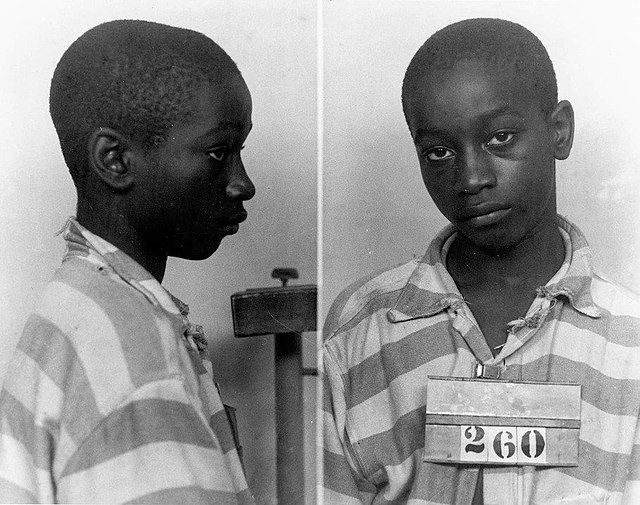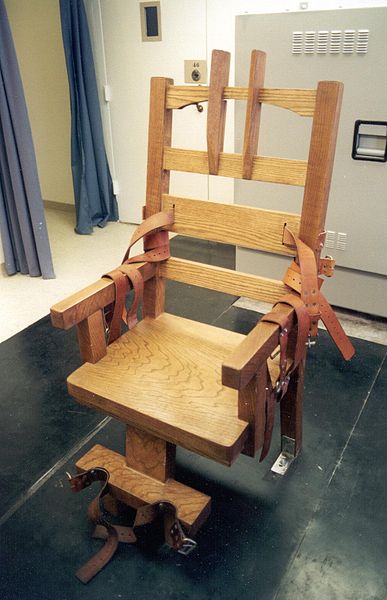George Junius Stinney Jr. was an African American boy who, at the age of 14, was convicted and then executed in a proceeding later vacated as an unfair trial for the murders of two young white girls in March 1944 – Betty June Binnicker, age 11, and Mary Emma Thames, age 8 – in his hometown of Alcolu, South Carolina. He was convicted, sentenced to death, and executed by electric chair in June 1944, thus becoming the youngest American with an exact birth date confirmed to be both sentenced to death and executed in the 20th century.
Stinney's 1944 mugshot
George Stinney (second from right) being led to the execution chamber
The electric chair is a specialized device employed for carrying out capital punishment through the process of electrocution. During its use, the individual sentenced to death is securely strapped to a specially designed wooden chair and electrocuted via strategically positioned electrodes affixed to the head and leg. This method of execution was conceptualized by Alfred P. Southwick, a dentist based in Buffalo, New York, in 1881. Over the following decade, this execution technique was developed further, aiming to provide a more humane alternative to the conventional forms of execution, particularly hanging. The electric chair was first utilized in 1890 and subsequently became known as a symbol of this method of execution.
Electric chair at the Florida State Prison
The execution of William Kemmler, August 6, 1890
The former Louisiana execution chamber at the Red Hat Cell Block in the Louisiana State Penitentiary, West Feliciana Parish. The electric chair is a replica of the original.





